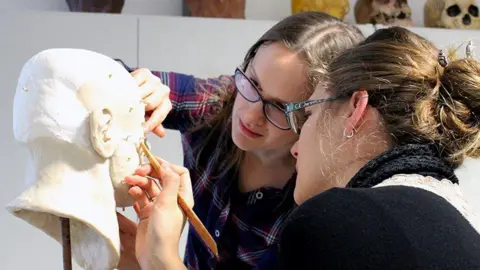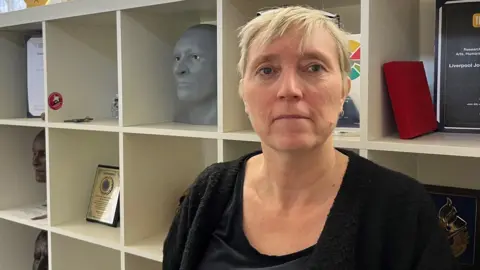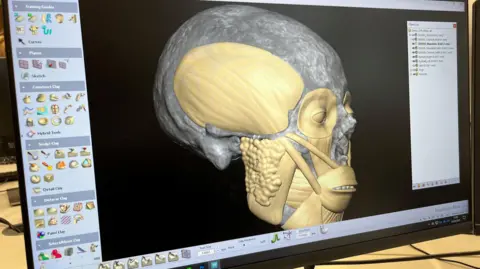Team reconstructs faces to put names to the dead
 LJMU
LJMUA project that uses advanced forensic techniques to identify people who have died on perilous journeys across Europe will help families find answers, the experts involved have said.
Liverpool John Moores University's (LJMU) Face Lab research group is using new identification technologies as part of the Migrant Disaster Victim Identification project.
Project chair Professor Caroline Wilkinson said only a quarter of the 25,000 people who had died crossing the Mediterranean in the last ten years had been identified.
The network of experts involved in the project are trying to reverse this trend and "find answers" about who these people were, she said.

"People may have been trafficked, they may have used illegal routes to get across different countries, their families may not know where they are," Ms Wilkinson said.
The process of identifying the deceased was "really challenging", she added.
She said: "Many of the primary identifiers such as DNA, dental, and fingerprints are not possible either because of the circumstances of the body retrieval or because there's nothing to compare to.
"Knowing where in the world the person is from is a really challenging part of an identification process."

The Face Lab project team is looking into new ways of being able to formally identify people using what they refer to as 'secondary identifiers'.
These include a person's facial features, birthmarks, tattoos or piercings.
The team has developed systems to cross reference images with social media photographs and is also developing handheld 3D scanners which can be used by first responders to record a deceased migrants' features, before further decomposition sets in.
Dr Frederic Bezombes at LJMU's Forensic Research Institute, is developing the scanners.
He said: "Once an image is captured, you can change the angles, the lighting and introduce various artefacts that might make the face more recognisable to someone who knows the person, whereas a 2D photograph [of the deceased] might be more of a struggle."
Listen to the best of BBC Radio Merseyside on BBC Sounds and follow BBC Merseyside on Facebook, X, and Instagram, and watch BBC North West Tonight on BBC iPlayer.
